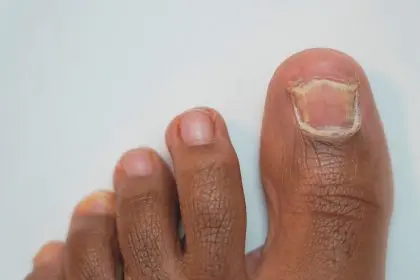That tight feeling in your jaw during intense workouts isn’t just a sign of concentration or effort, it’s actually creating a cascade of muscular tension that’s limiting your strength, endurance, and overall athletic performance in ways you never imagined. Your jaw muscles are connected to your entire body’s movement system, and when they’re chronically tight, they’re essentially putting the brakes on your physical capabilities.
Most athletes focus obsessively on training their legs, core, and arms while completely ignoring the powerful influence their jaw has on their entire kinetic chain. Your temporomandibular joint and the muscles that control it are neurologically linked to muscles throughout your body, creating patterns of tension and relaxation that can either enhance or sabotage your athletic performance.
The connection between jaw tension and athletic limitation is so profound that many professional athletes now work with specialists specifically to address jaw-related performance issues. What they’ve discovered is that releasing jaw tension can unlock strength gains, improve endurance, and enhance coordination in ways that seem almost magical until you understand the underlying biomechanics.
Why your jaw controls more than just chewing
Your jaw muscles are among the strongest in your entire body, capable of generating tremendous force that’s designed not just for eating but for survival situations where jaw strength could mean life or death. These powerful muscles don’t operate in isolation, they’re neurologically connected to your neck, shoulders, back, and even your core through complex fascial and nervous system pathways.
When your jaw muscles are chronically tight or misaligned, they create compensation patterns that ripple throughout your entire body. Your neck muscles have to work harder to maintain head position, your shoulders elevate to reduce strain, and your breathing becomes restricted, all of which directly impact your athletic performance.
The trigeminal nerve, which controls jaw muscles, is one of the largest cranial nerves and has extensive connections throughout your nervous system. When this nerve is overstimulated by chronic jaw tension, it can affect your body’s overall nervous system function, reducing your ability to generate power, maintain coordination, and recover between efforts.
Your jaw position also directly affects your airway and breathing mechanics. A misaligned or tense jaw can restrict airflow, forcing you to work harder to get oxygen during exercise while simultaneously creating unnecessary muscular tension that wastes energy you could be using for performance.
The stress response that starts in your mouth
Most people clench their jaw when they’re under stress, and intense physical exercise is one of the most significant stressors you can put on your body. This creates a feedback loop where athletic effort triggers jaw tension, which then amplifies your body’s stress response and makes the exercise feel even more difficult than it needs to be.
Jaw clenching activates your sympathetic nervous system, the same system responsible for fight-or-flight responses. While some sympathetic activation is beneficial for athletic performance, chronic jaw tension can push you into a state of excessive stress activation that interferes with coordination, decision-making, and efficient energy use.
The muscles of mastication, which control jaw movement, are directly connected to your body’s postural control systems. When these muscles are tight, they can throw off your entire postural alignment, forcing other muscles to work overtime to maintain balance and stability during movement.
Chronic jaw tension also affects your body’s ability to enter recovery states between training sessions. If your jaw muscles never fully relax, your entire nervous system remains in a state of heightened activation that prevents optimal recovery and adaptation to training stimuli.
How jaw tension steals your strength
When your jaw is clenched, it creates what exercise physiologists call “irradiation,” where tension in one area spreads to connected muscle groups. This muscular irradiation can actually be beneficial when used strategically, but chronic jaw tension creates unwanted irradiation that wastes energy and reduces the efficiency of your movements.
The fascial connections between your jaw and the rest of your body mean that jaw tension can restrict movement quality throughout your entire kinetic chain. Tight jaw muscles can limit shoulder mobility, reduce spinal rotation, and even affect hip function, all of which directly impact your ability to generate and transfer power during athletic movements.
Your body’s neurological wiring prioritizes survival functions, and jaw tension signals to your nervous system that you’re in a threatening situation. This causes your body to hold back some of its potential power output as a protective mechanism, essentially putting a governor on your strength capabilities.
Jaw clenching also interferes with your body’s natural rhythm and timing during complex movements. Athletic performance relies heavily on the coordinated timing of muscle contractions, and jaw tension can disrupt these timing patterns, making movements feel awkward and less powerful.
The breathing connection that changes everything
Your jaw position directly affects the position of your tongue, which in turn affects your airway space and breathing efficiency. Athletes with chronic jaw tension often develop compensatory breathing patterns that reduce oxygen uptake and increase the energy cost of breathing during exercise.
When your jaw is properly aligned and relaxed, your tongue can rest in its optimal position, creating maximum airway space and allowing for deeper, more efficient breathing. This improved breathing efficiency can dramatically increase endurance and reduce the perceived effort of exercise.
Jaw tension often forces athletes to breathe through their mouth instead of their nose, which bypasses the natural filtering, warming, and humidifying functions of nasal breathing. Mouth breathing also reduces the production of nitric oxide, a compound that improves oxygen delivery to working muscles.
The diaphragm, your primary breathing muscle, is connected to your jaw and neck muscles through fascial pathways. Jaw tension can restrict diaphragmatic movement, forcing you to rely more heavily on secondary breathing muscles that are less efficient and tire more quickly during exercise.
Why elite athletes are obsessing over jaw alignment
Professional athletes are increasingly working with dentists, orthodontists, and jaw specialists to optimize their bite alignment and reduce jaw tension because the performance benefits can be substantial. Proper jaw alignment can improve power output, reduce injury risk, and enhance recovery between training sessions.
Custom mouthguards designed for athletic performance don’t just protect teeth, they’re engineered to optimize jaw position for better breathing, reduced tension, and improved neuromuscular function. These specialized devices can literally unlock athletic potential that’s been limited by jaw dysfunction.
Some elite athletes report immediate improvements in strength, endurance, and coordination when their jaw issues are addressed. The changes can be so dramatic that athletes wonder how they ever performed at a high level with their previous jaw tension patterns.
The growing recognition of jaw-performance connections has led to the development of specialized training protocols that include jaw relaxation techniques, breathing exercises, and postural corrections designed to optimize jaw function for athletic performance.
The sleep and recovery factor you never considered
Jaw tension doesn’t disappear when your workout ends, it often continues throughout the day and night, interfering with sleep quality and recovery processes. Many athletes who clench or grind their teeth during sleep never achieve truly restorative rest, which limits their ability to adapt to training and improve performance.
Sleep bruxism, or teeth grinding during sleep, can create chronic inflammation in the jaw joint and surrounding muscles, leading to persistent tension that affects daytime athletic performance. This creates a cycle where poor recovery leads to more stress and more jaw tension.
The quality of your sleep is directly related to your body’s ability to produce growth hormone, repair damaged tissues, and consolidate motor learning from training sessions. Jaw tension that interferes with sleep quality can significantly impact these recovery processes.
Addressing jaw tension and sleep-related jaw issues can lead to improvements in sleep quality that cascade into better recovery, improved mood, enhanced cognitive function, and ultimately better athletic performance.
Simple techniques that unlock your jaw’s athletic potential
Conscious jaw relaxation during exercise can immediately improve performance by reducing unnecessary muscular tension and improving breathing efficiency. Simply letting your jaw hang slightly open during aerobic exercise can reduce perceived effort and improve endurance.
Progressive muscle relaxation techniques that specifically target the jaw and surrounding muscles can help break patterns of chronic tension. Spending just a few minutes before and after workouts focusing on jaw relaxation can have profound effects on overall performance.
Breathing exercises that coordinate jaw position with diaphragmatic breathing can help establish new neuromuscular patterns that support both relaxation and performance. These techniques help train your body to maintain optimal jaw position even under stress.
Massage and self-release techniques for the jaw muscles, including the masseter, temporalis, and pterygoid muscles, can help reduce chronic tension and improve jaw mobility. These techniques are simple enough to perform daily but can have significant impacts on performance.
The posture cascade that starts with your mouth
Your jaw position influences your head position, which affects your neck alignment, which impacts your shoulder position, which influences your spinal curves, which affects your hip alignment, which changes how your feet contact the ground. This entire postural cascade can be initiated by jaw dysfunction.
When your jaw is properly aligned and relaxed, it allows your head to sit in its optimal position over your shoulders, reducing the workload on your neck muscles and improving your overall postural efficiency. This improved posture translates directly into better movement quality and athletic performance.
The forward head posture that often accompanies jaw tension can reduce lung capacity, limit shoulder mobility, and create compensatory movement patterns throughout the body. Addressing jaw position can help correct these postural issues and unlock better movement quality.
Proper jaw alignment also affects your visual system and balance mechanisms, as the position of your head influences your inner ear function and proprioceptive feedback. Better jaw alignment can actually improve balance and spatial awareness during athletic activities.
The mental performance connection hiding in your jaw
Jaw tension is closely linked to mental stress and cognitive load, which directly affect athletic performance through their impacts on focus, decision-making, and motor control. Athletes who learn to manage jaw tension often report improvements in mental clarity and competitive focus.
The act of consciously relaxing your jaw can trigger a relaxation response that helps manage performance anxiety and competitive stress. This simple technique can be used during competition to maintain optimal arousal levels for peak performance.
Chronic jaw tension can contribute to headaches and mental fatigue that reduce training quality and competitive performance. Addressing jaw issues often leads to improvements in overall mental energy and cognitive function.
The mindfulness required to monitor and manage jaw tension can also improve overall body awareness and movement quality, helping athletes become more attuned to their physical state and make better real-time adjustments during performance.
Your jaw might be your biggest performance limiter
The connection between jaw function and athletic performance is so significant that addressing jaw issues should be considered an essential component of any serious training program. The improvements in strength, endurance, breathing, recovery, and movement quality that can result from optimizing jaw function often exceed what athletes expect from months of traditional training.
Your jaw tension patterns developed over years or even decades, but the performance benefits of addressing them can often be felt immediately. Simple awareness of jaw position during exercise can lead to instant improvements in comfort and efficiency.
The next time you’re struggling to break through a performance plateau or wondering why your workouts feel harder than they should, check in with your jaw. That unconscious tension in your mouth might be the hidden factor that’s been limiting your athletic potential all along.















